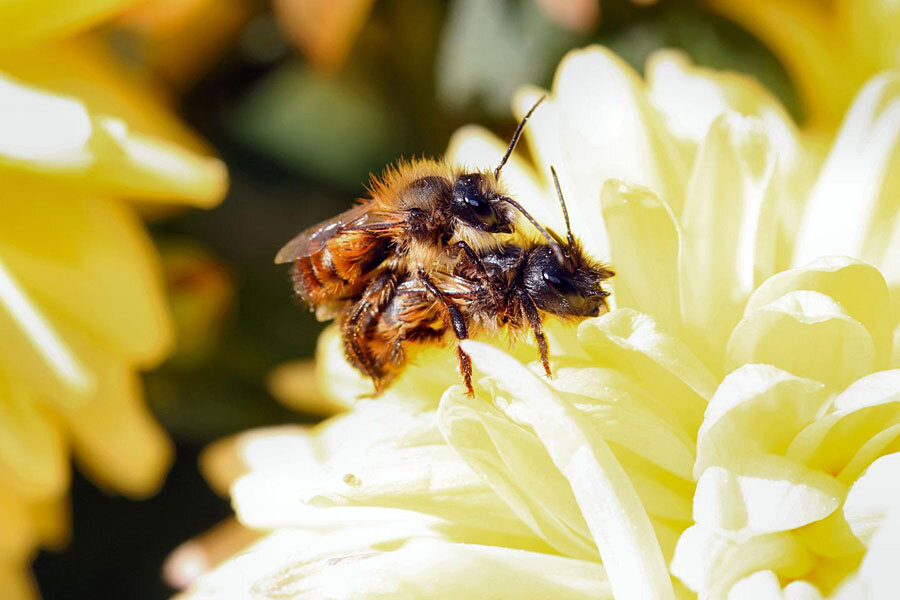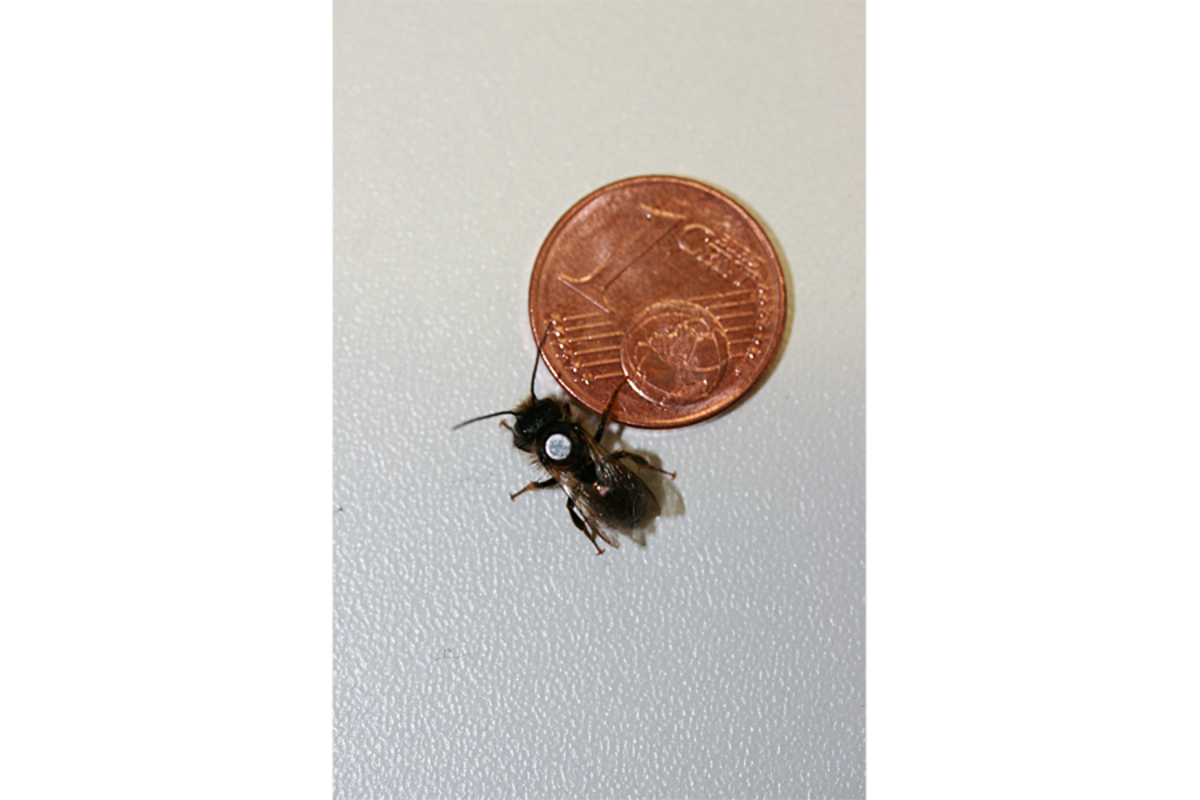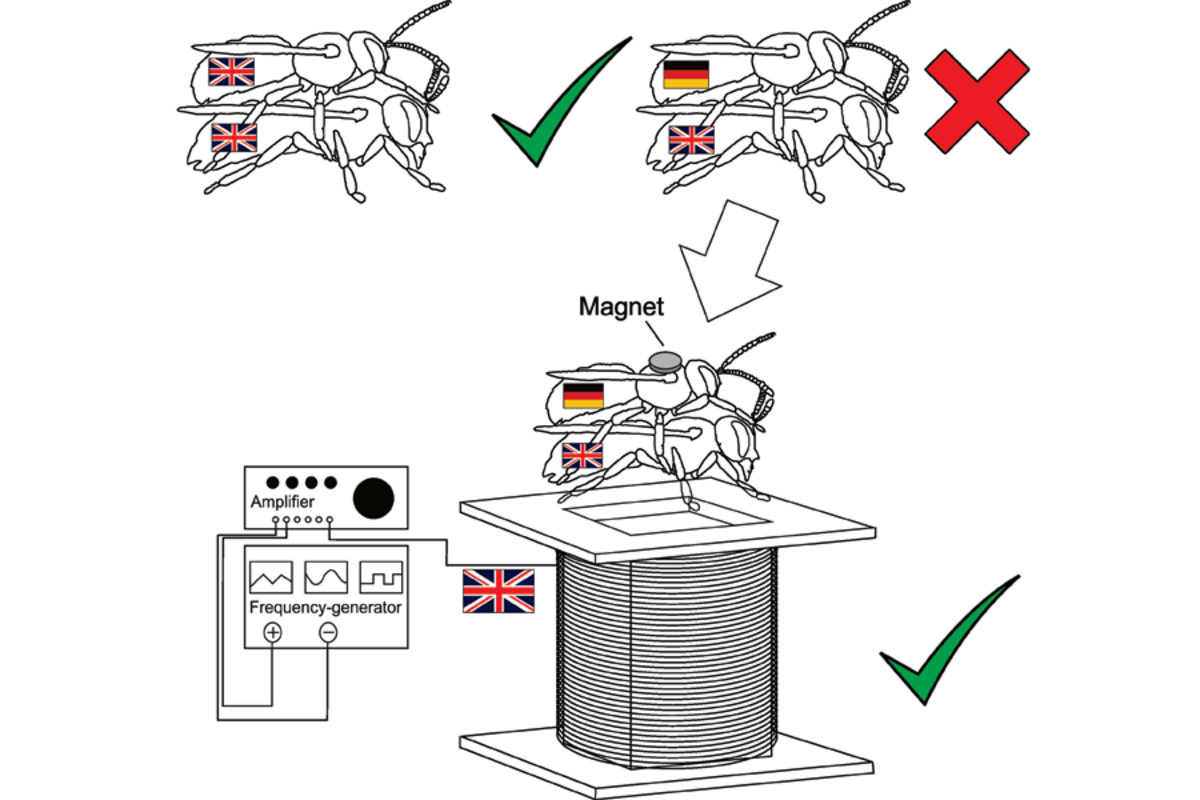How a bee’s buzz signals hometown, attracts females
Whether a male bee finds a mate or not might depend on how he buzzes.
Female red mason bees check out a male’s vibrations, but not just for strength and health. Like an accent, a buzz can reveal where the male is from.
And, according to a new study, the females prefer to mate with their own countrymen.
In a paper published Thursday in the journal Current Biology, scientists observed the mating habits of red mason bees from Germany, England, and Denmark.
“We knew from previous studies that the female bee, in the red mason bee that is, uses vibrations to pick a male,” study author Taina Conrad of the Institute of Evolutionary Ecology and Conservation Genomics, University of Ulm tells The Christian Science Monitor in an interview. But “now we found that they actually use it not just as a sign for physical strength, which is a basic signal, but somehow, somewhere in this signal is also encoded where the male comes from.”
Among red mason bees, mating is ladies’ choice, with the females accepting or denying a male’s advances based on mating behavior. When the males were from their own country, the females overwhelmingly accepted them, with a success rate of about 90 percent.
But when bees from a different country tried to mate, the female rejected them most of the time. These combinations had success rates as low as 20 percent.
When a male red mason bee tries to mate with a female he must first woo her through mating behaviors. First, he will hop on her back. Then, “He waves his front legs and his antennae in front of the female’s eyes and antennae,” describes Dr. Conrad. “Meanwhile, he produces these vibrations that we were looking at.”
The bee uses his wing muscles to create these vibrations, signaling his physical fitness and apparently his homeland.
“He does that for a while and then he tries to copulate with the female,” explains Conrad. “The female either lets him copulate, or she throws him off if she doesn’t like him.” The female can also bend away from the male if she doesn’t like him, although he will try to woo her again if he is still on her back.
The researchers first observed bees attempting to mate with bees from their own country and from others. They kept track of the success rates, and measured and recorded the bees’ vibrations.
Using these recordings, the researchers were able to eliminate other potential signals of a bees’ home country.
“We thought, ok those vibrations might be how they differ between the different countries and they might be the reason why the females choose one male over another. But in order to actually know that, you would have to change the vibrations in a live bee,” Conrad says. For example, in a “German male change the vibrations so he sounds or rather feels like an English male.”
“That actually is a lot more difficult than you would think, because they sit on top of each other,” she says.
But the researchers were able to find a way around that challenge.
“We wanted to find a non-invasive way to change their vibrations,” Conrad says. So what better way than to glue tiny magnets to the bees’ backs?
Conrad and the other study author, Manfred Ayasse, placed each pair of male and female bees on an inductor. “The inductor was connected to an amplifier and a frequency generator,” says Conrad. Then, she entered the signals, known from recording bees’ actual vibrations, in the frequency generator. That vibration pattern was transferred to the inductor, creating an electromagnetic field.
Through that electromagnetic field, Conrad was able to make the magnet vibrate. “Fortunately the males feel that and stop their own vibrations, but they continued their other mating behavior,” she says.
“Amazingly, this worked really really well and suddenly the females like to mate with the males they hadn’t liked before," says Conrad. “If you change the language, so to say, and now they speak the right language, she will mate with him again. To us that’s just proof that it really is something in the vibrations, because we didn’t change anything else.”
The researchers even tried the opposite: making a male from the same country as the female vibrate as though he were from another country. The mating success rate plummeted. It was all about the vibrations.
Why don’t females want to mate with males from other places?
“We believe that that could be because of local adaptations that they might have, for example, the bees from Germany might be adapted to the climate in Germany or the flowers that they find here,” Conrad says. The offspring produced with a male without those adaptations would likely be less successful.
Okay, but why do we care about bees in the first place?
Bees are crucial pollinators of many crops. This agriculture supports much of the world’s food supplies. Understanding how bees mate can help maintain this vital population.
Conrad says she likes to quote Albert Einstein, or at least a phrase attributed to him. “He was supposed to have said that if the bees disappear from the world, then man would only have four years of life left. No more bees, no more pollination, no more plants, no more animals, no more man.”









